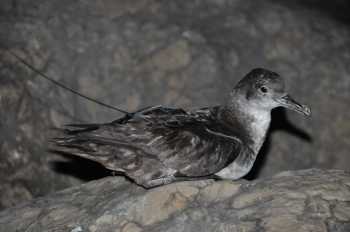Alice Jones (The Environment Institute & School of Ocean and Earth Sciences, University of Adelaide, Australia) and colleagues have published open access in the journal Endangered Species Research on the at-sea distribution of the ACAP-listed and Critically Endangered Balearic Shearwater Puffinus mauretanicus.
The paper’s abstract follows:
“We investigated spatio-temporal distribution patterns of the Critically Endangered Balearic shearwater Puffinus mauretanicus in the northern part of its migratory range, using a combination of effort-corrected land- and boat-based survey data (2007-2010). The species was recorded regularly along the western English Channel (Western Channel) coasts of northwest France and the southwest UK, with peak counts occurring during the summer and autumn months. Foraging aggregations comprising hundreds to thousands of birds (~1 to 20% of the global population) were recorded in the large shallow embayments of northern Brittany in all survey years. Elsewhere, most birds were recorded on passage, with maximum birds-per-hour (BPH) of 169 off northwest France and 36 off the southwest UK. Few birds were recorded offshore, beyond sight of land. A distance-from-shore analysis revealed that the species passed closer to shore than other pelagic seabirds such as sooty shearwater Puffinus griseus. A constant-effort seasonal survey from the southwest tip of the UK mainland recorded the species on 93% of survey days, with BPH rates peaking in the morning between 08:00 and 11:00 h. These results have important monitoring and conservation implications for this Critically Endangered species. In particular, the records of large aggregations in spatially restricted areas of the Western Channel during the inter-breeding period suggests the species could be vulnerable to impacts such as oil spills, or disturbance from offshore construction projects. We also provide evidence that some birds remain in the survey area during the breeding season, suggesting it may be an important site for non-breeding birds.”

Balearic Shearwater, photograph by Henri Weimerskirch
Reference:
Jones, A.R., Wynn, R.B., Yésou, P., Thébault, L., Collins, P., Suberg, L., Lewis, K.M. & Brereton,T.M. 2014. Using integrated land- and boat-based surveys to inform conservation of the Critically Endangered Balearic shearwater. Endangered Species Research 25:1-18.
For the paper’s supplementary material click here.
John Cooper, ACAP Information Officer, 11 August 2014

 English
English  Français
Français  Español
Español